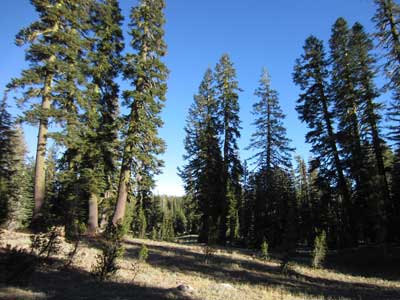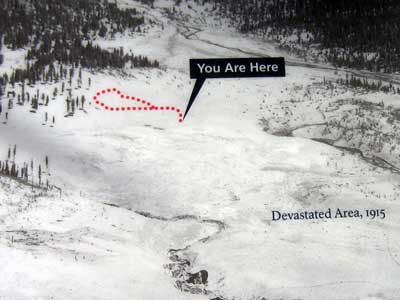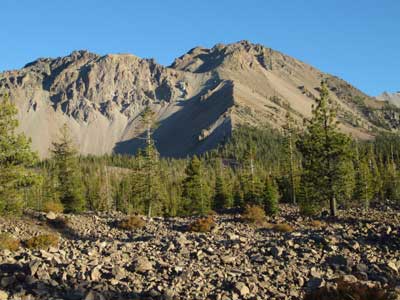LASSEN (Day 5 - part 5)
On the drive back up, we stopped at many of the smaller places we had passed on the way down. At Kings Creek, we caught the relatively short trail to Cold Boiling Lake.


A path through the forest


Another hopeful ground squirrel





Our next short stop (and walk) was along the 1/2-mile interpretive trail through what was called the Devastated Area. This spot stood directly in the path of a large avalanche of snow and lava that had been triggered by a large eruption of Lassen Peak on May 19, 1915. It was half a mile wide and roared down the mountain, destroying six homesteads. Fortunately everyone had evacuated just in time.
Three days later, the volcano blew again with even greater force. It hurled rocks and pumice (lava filled with gas bubbles) into the air, which set off another even greater avalanche. Rocks the size of cabins were carried up to 4 miles away. The column of volcanic ash rose over 30,000 feet in the air and could been seen 150 miles away.



More measuring equipment

The quiet before the volcanic storm


The first eruption and avalanche ... and the second







Hot lava rocks tumbled and bounced all the way down the hill, carried by the massive avalanche, where they eventually settled, sizzled and cooled.

Old and new(ish) rocks are all found in this area. From left to right: gray dacite (formed 27,000 years ago when Lassen Peak first erupted); red dacite (ditto, but a different color); black dacite (formed a lava plug that sealed off the crater and then shattered during the first May 1915 eruption); light dacite pumice (from the second May 1915 eruption); banded pumice (also from the second May eruption, but a combination of magmas of different compositions: light dacite and dark andesite)

This is a massive piece of red dacite from 27,000 years ago. It was torn from the mountain and carried here by the 1915 avalanches.
Two miles up the road, by Lost Creek, rested a 300-ton rock. It had been dragged here by the 1915 avalanches. Apparently it was still hot to the touch several days after it stopped here, hence its name of Hot Rock.


Driving on...

Although the wagon tracks have long since faded, this was once the route of the Nobles Trail, a route for settlers and miners to California. Discovered in 1851 by William H. Nobles, it was an easier trail through the mountains. He did his best to promote it but couldn't compete with more well-established and well-known (albeit harder) trails farther south.


Chaos Crags is composed of six steep-sided dome volcanoes which erupted 1,100 years ago. They were unstable and prone to collapse.... which was what happened right here some 350 years ago. An enormous rock avalanche, called Chaos Jumbles, broke lose (three times in a row) and slid down the mountain, leaving rubble up to 4 miles away. In some places, it was 130 feet thick, having buried the original forest.


We returned to our campsite, set up the tent and had a bit of food. It was very, VERY cold out!

return • continue

